Support HB3221; Rep. Cassidy
The Ballot Access for All Act would:
- Require people running for public office to provide a telephone number and email address on their statements of candidacy so the media and the public can more easily reach them to learn about their candidacies.
- Improve ballot access for candidates by lowering the number of signatures required to run for any county-wide office in Cook County and any citywide office in Chicago and bring uniformity to the signature numbers required.
- Create a pilot program for e-signature collection and verification.
- Allows voters to sign more than one petition
To run for office, candidates typically file four-to-ten times the minimum number of required petition signatures in order to qualify for the ballot. The need to collect a multitude of signatures is common to try to stave off challenges to petition signatures and politically-motivated attempts to block access to the ballot. Successful petition challenges lower voters’ choices and the numbers of competitive races. The Ballot Access for All Act would improve the likelihood more candidates will meet the requirements to run, giving voters more choices.
Other states do not have such extensive requirements to run. In California, for example, challenges to candidacies are rare, according to James Schwab, California deputy secretary of state for policy and planning. An election official verifies a candidate’s residency and the voter signatures submitted and that’s it.
In Illinois, drawn-out battles to access the ballot often delay early voting and prevent candidates from campaigning and educating voters about their views. In Colorado, e-Sign technology has reduced invalid voter signatures from 35 percent to as low as 1 percent.
The Ballot Access for All Act would require that the State Board of Elections create a pilot program to transition Illinois’ paper petitions process to an electronic system. The pilot should allow a petition canvasser to check a prospective signer’s eligibility and voter registration in real-time and then, if necessary, update the signer’s voter
registration. A real-time, electronic system would help more candidates qualify for the ballot and drastically cut down on the numbers, time and expense of petition challenges.
The Ballot Access for All Act also would bring consistency to the number of required petition signatures. The Governor of Illinois, or any other statewide officeholder, has to file a minimum of 5,000 signatures to appear on the ballot. But a candidate for mayor of Chicago, for example, must collect 12,500 signatures. For a countywide office in Cook County, the number is a moving target: five percent of the registered voters within the candidate’s political party. In 2018, this meant collecting 20,000 signatures.
This reduction in the number of required signatures would allow more residents without political ties to run for office in Cook County and the City of Chicago, making our elections more democratic and representative of all of us. For Chicago municipal elections, the Board of Elections asks candidates to provide contact information, where all but one candidate voluntarily provided an email address, phone number, or both.
